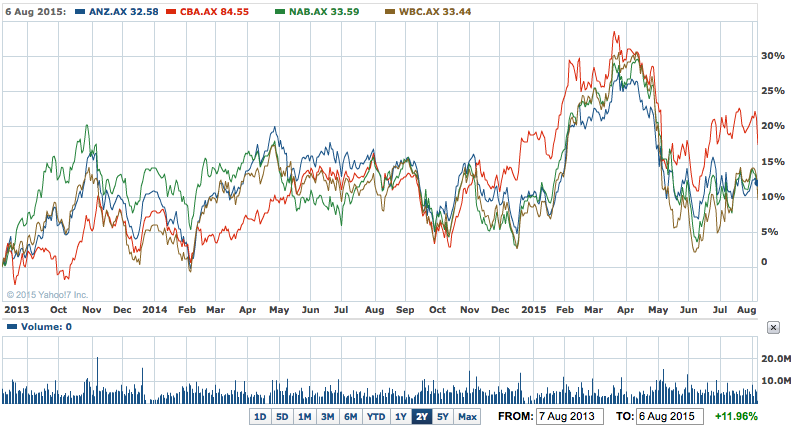ANZ took the market by surprise, especially its peers, yesterday when it revealed a $3 billion capital raising to boost its capital base closer to new requirements for the big banks to hold more capital to make them safer and strong enough to ride out a downturn or crisis.
The issue will advantage the big end of town, while disadvantaging small shareholders, especially self-managed super funds.
Regulators led by APRA and the Reserve Bank want the big four banks to hold more capital than they have now – both to be able to withstand any sharp downturn, and to support home lending where the regulators have lifted the amount of capital lenders must hold against their loans.
Small shareholders look like losing out because $2.5 billion of the $3 billion will come from big shareholders (at a discount of up to 5%).
The remaining half a billion will be sought from small shareholders such as self-managed super funds, who would normally jump at buying bank shares at a discount. They will be able to buy up to $15,000 shares, or a whole 484 shares, which is hardly generous.
Westpac has moved to meet that requirement by selling off part of its holding in its former BT asset management subsidiary, plus reactivating its dividend reinvestment program (DRP).
NAB raised more than $5 billion in fresh capital is for this new requirement (and to help get the troubled Clydesdale bank off its books) and is also running a DRP.
The CBA is running its DRP (and could announce other moves next week in its full year profit announcement).
There is also talk the big four are interested in selling off other holdings such as their weakly performing, but capital hungry insurance operations.
Investors though gave the ANZ news the thumbs down by selling down the rest of the big three banks, which crunched the wider market.
The sell off in banks helped the ASX 200 fall 0.7% or 50 points to 5632.2.
CBA shares lost 3.2%, Westpac 3% and the NAB 2.1%. ANZ shares were placed in a trading halt to allow the placement to big shareholders to take place.
How far will banks be sold down?

No wonder the wider market slid 1.1% or nearly 64 points for the ASX 200. At one stage the market was off more than 1.3%, but staged a late rally.
These however were kneejerk falls and are similar to the sell-off after the NAB announced its capital raising a couple of months ago.
The ANZ said the capital raising would be conducted via a $2.5 billion institutional placement, which would be fully underwritten, and a $500 million shareholder purchase plan, which would not be underwritten.
Citi, Deutsche Bank and JPMorgan are handling the placement, which will be conducted today through an accelerated book build in a price range from $30.95 upwards. That represents a potential discount of as much as 5% to ANZ’s closing price on Wednesday of $32.58.
In a statement to the ASX, ANZ said the capital raising would allow the bank “to more quickly and efficiently accommodate additional capital requirements recently announced by the Australian Prudential Regulation Authority (APRA), in particular the increase in average credit risk weights for major bank Australian mortgage portfolios to 25% taking effect from 1 July 2016”.
The lender said the placement would add approximately 65 basis points (0.65%) to its common equity tier 1 (CET1) capital ratio, while the share purchase plan would add a further 13bps (0.13%), taking the CET1 capital ratio to 9.3%.
The ANZ also provided a brief trading update, revealing that in the nine months to June 30, cash profit was up 4.3% to $5.4 billion compared to the same period last year.
ANZ is due to release a fully trading update on August 18.













